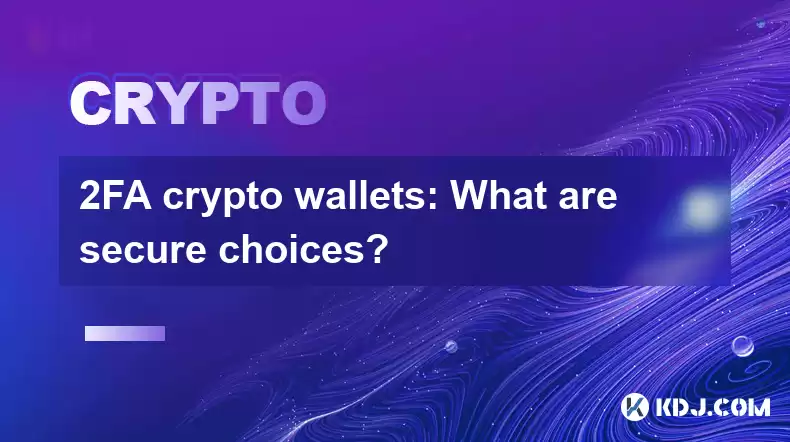-
 Bitcoin
Bitcoin $118300
1.01% -
 Ethereum
Ethereum $4215
0.69% -
 XRP
XRP $3.198
-3.83% -
 Tether USDt
Tether USDt $1.000
-0.01% -
 BNB
BNB $803.4
-0.53% -
 Solana
Solana $180.3
-0.67% -
 USDC
USDC $0.9998
-0.01% -
 Dogecoin
Dogecoin $0.2334
-1.49% -
 TRON
TRON $0.3394
0.86% -
 Cardano
Cardano $0.7980
-1.45% -
 Chainlink
Chainlink $22.19
6.65% -
 Hyperliquid
Hyperliquid $43.41
0.13% -
 Stellar
Stellar $0.4407
-3.13% -
 Sui
Sui $3.843
-2.24% -
 Bitcoin Cash
Bitcoin Cash $564.7
-3.74% -
 Hedera
Hedera $0.2588
-3.41% -
 Ethena USDe
Ethena USDe $1.001
0.00% -
 Avalanche
Avalanche $23.64
-3.37% -
 Litecoin
Litecoin $120.0
-4.01% -
 Toncoin
Toncoin $3.342
-1.11% -
 UNUS SED LEO
UNUS SED LEO $9.038
0.60% -
 Shiba Inu
Shiba Inu $0.00001347
-0.81% -
 Uniswap
Uniswap $10.69
-4.58% -
 Polkadot
Polkadot $4.034
-1.30% -
 Dai
Dai $1.000
0.01% -
 Bitget Token
Bitget Token $4.472
-1.52% -
 Cronos
Cronos $0.1571
-3.04% -
 Pepe
Pepe $0.00001207
-2.21% -
 Monero
Monero $273.8
-3.19% -
 Ethena
Ethena $0.7520
2.75%
2FA crypto wallets: What are secure choices?
Two-factor authentication (2FA) bolsters crypto wallet security by adding an extra layer of protection, requiring two different forms of verification for access, significantly reducing vulnerability to unauthorized individuals.
Feb 06, 2025 at 02:43 pm

Key Points:
Understanding 2FA in Crypto Wallets:
- Definition and Benefits of Two-Factor Authentication
- Hardware Wallets and Two-Factor Authentication Integration
Secure Crypto Wallets with 2FA:
- Trezor Model T
- Ledger Nano X
- SafePal S1
- Keystone Pro
- CoolWallet Pro
How to Use 2FA on Crypto Wallets:
- Enabling 2FA on Hardware Wallets
- Managing Multiple 2FA Accounts
Benefits of Using 2FA Crypto Wallets:
- Enhanced Account Security
- Protection Against Phishing Attacks
- Compliance with Cybersecurity Standards
FAQs:
- Is it mandatory to use 2FA on crypto wallets?
- How can I recover my crypto wallet if I lose access to my 2FA device?
- What are some best practices for managing 2FA crypto wallets?
Understanding 2FA in Crypto Wallets
Two-factor authentication (2FA) adds an extra layer of security to your cryptocurrency wallet, making it more difficult for unauthorized individuals to access your funds. By requiring you to provide two different forms of identification when logging in, 2FA significantly reduces the risk of account compromise.
When using a hardware wallet, 2FA is typically integrated through a mobile application. The app generates a unique code that must be entered along with your password when accessing your wallet. This ensures that even if your password is stolen, an attacker cannot access your funds without also having your phone or another authorized device.
Secure Crypto Wallets with 2FA
Several reputable crypto wallets incorporate 2FA for enhanced security, including:
- Trezor Model T: A popular hardware wallet with a variety of security features including 2FA, a passphrase, and a touchscreen for ease of use.
- Ledger Nano X: Another top-rated hardware wallet that offers 2FA via its Ledger Live mobile application, which also allows you to manage multiple cryptocurrencies.
- SafePal S1: A user-friendly hardware wallet with a metal casing and a built-in 2FA chip, providing high levels of protection against unauthorized access.
- Keystone Pro: A high-end hardware wallet that boasts a large touchscreen, multiple levels of encryption, and support for over 1,800 cryptocurrencies, backed by 2FA through the Keystone Wallet app.
- CoolWallet Pro: A unique hardware wallet in the form of a physical credit card with a foldable screen, offering Bluetooth and NFC connectivity and 2FA protection via the CoolWallet app.
How to Use 2FA on Crypto Wallets
Enabling 2FA on your hardware wallet typically involves the following steps:
- Install the corresponding mobile application on your smartphone.
- Open the app and connect it to your hardware wallet using a USB cable or Bluetooth.
- Follow the on-screen instructions to set up 2FA, which usually involves scanning a QR code on the hardware wallet and entering your PIN or seed phrase.
Managing Multiple 2FA Accounts
If you have multiple hardware wallets or crypto accounts, you can use different 2FA apps or utilize features that allow you to manage several accounts within a single app. Some apps also offer time-based One-Time Passwords (TOTPs) as an alternative to scanning QR codes.
Benefits of Using 2FA Crypto Wallets
- Enhanced Account Security: 2FA significantly reduces the risk of account compromise by requiring multiple forms of identification before granting access.
- Protection Against Phishing Attacks: Phishing attacks attempt to trick you into revealing your password or other sensitive information. 2FA helps prevent this by requiring a separate code that is not accessible to attackers.
- Compliance with Cybersecurity Standards: Many financial institutions and regulatory bodies require or recommend the use of 2FA for enhanced security. Compliance with 2FA demonstrates your commitment to protecting your assets.
FAQs
- Is it mandatory to use 2FA on crypto wallets?
While not mandatory, it is strongly recommended to enable 2FA on your crypto wallet to protect your funds from unauthorized access.
- How can I recover my crypto wallet if I lose access to my 2FA device?
Recovery procedures vary depending on the hardware wallet model. Generally, you can use your recovery phrase or a backup device to restore your wallet and regain access to your funds.
What are some best practices for managing 2FA crypto wallets?
- Use strong and unique passwords.
- Keep your 2FA device secure and accessible.
- Enable 2FA on all devices that you use to access your crypto wallet.
- Consider using hardware wallets with built-in 2FA chips for enhanced security.
- Regularly back up your recovery phrase and store it offline in a safe location.
Disclaimer:info@kdj.com
The information provided is not trading advice. kdj.com does not assume any responsibility for any investments made based on the information provided in this article. Cryptocurrencies are highly volatile and it is highly recommended that you invest with caution after thorough research!
If you believe that the content used on this website infringes your copyright, please contact us immediately (info@kdj.com) and we will delete it promptly.
- Cardano, Returns, and Trade Deals: A New Yorker's Take
- 2025-08-10 18:50:16
- Dogwifhat's Comeback: Solana Meme Coin Mania and Beyond!
- 2025-08-10 18:30:15
- Solana vs. Ethereum: The Meme Coin Throwdown and the Rise of Layer Brett
- 2025-08-10 19:10:16
- Solana, Exodus, and Tokenization: A New Era for Equity?
- 2025-08-10 18:50:16
- Bitcoin, Chainlink, and Crypto: What's the Hype?
- 2025-08-10 19:10:16
- Trump, Crypto, and Treasury Companies: What's the Deal?
- 2025-08-10 19:15:16
Related knowledge

What is Ethereum’s Slashing mechanism and how to punish malicious behavior?
Feb 20,2025 at 03:08am
Key PointsOverview of slashingDifferent types of slashing in EthereumIncentives and consequences of slashingIdentifying and reporting slashed validato...

What is the verifier node of Ethereum and how to become a verifier?
Feb 19,2025 at 06:00pm
The Verifier Node of Ethereum: A Comprehensive GuideKey Points:What is a Verifier Node?How to Become a Verifier NodeResponsibilities and Rewards of a ...

What is Ethereum’s staking, and how to participate and earn money?
Feb 19,2025 at 04:37pm
Key Points:Understanding Ethereum's Staking MechanismSteps to Participate in StakingBenefits and Rewards of StakingSecurity and Risk ConsiderationsTec...

What is Ethereum’s DAO (Decentralized Autonomous Organization) and how does it work?
Feb 20,2025 at 03:12am
Key PointsDefinition and Structure of a DAOGovernance and Decision-Making in DAOsBenefits and Use Cases of DAOsChallenges and Limitations of DAOsWhat ...

What is Ethereum's multi-signature wallet and how to improve security?
Feb 20,2025 at 02:18pm
Key Points:Understanding the Concept of a Multi-Signature WalletBenefits and Drawbacks of Multisig WalletsRequirements for Setting Up a Multisig Walle...

What is Ethereum's oracle and how to provide data for smart contracts?
Feb 21,2025 at 01:30am
Key Points:Understanding the concept of oracles in EthereumExploring different types of oraclesDetailed guide on how to provide data for smart contrac...

What is Ethereum’s Slashing mechanism and how to punish malicious behavior?
Feb 20,2025 at 03:08am
Key PointsOverview of slashingDifferent types of slashing in EthereumIncentives and consequences of slashingIdentifying and reporting slashed validato...

What is the verifier node of Ethereum and how to become a verifier?
Feb 19,2025 at 06:00pm
The Verifier Node of Ethereum: A Comprehensive GuideKey Points:What is a Verifier Node?How to Become a Verifier NodeResponsibilities and Rewards of a ...

What is Ethereum’s staking, and how to participate and earn money?
Feb 19,2025 at 04:37pm
Key Points:Understanding Ethereum's Staking MechanismSteps to Participate in StakingBenefits and Rewards of StakingSecurity and Risk ConsiderationsTec...

What is Ethereum’s DAO (Decentralized Autonomous Organization) and how does it work?
Feb 20,2025 at 03:12am
Key PointsDefinition and Structure of a DAOGovernance and Decision-Making in DAOsBenefits and Use Cases of DAOsChallenges and Limitations of DAOsWhat ...

What is Ethereum's multi-signature wallet and how to improve security?
Feb 20,2025 at 02:18pm
Key Points:Understanding the Concept of a Multi-Signature WalletBenefits and Drawbacks of Multisig WalletsRequirements for Setting Up a Multisig Walle...

What is Ethereum's oracle and how to provide data for smart contracts?
Feb 21,2025 at 01:30am
Key Points:Understanding the concept of oracles in EthereumExploring different types of oraclesDetailed guide on how to provide data for smart contrac...
See all articles

























































































